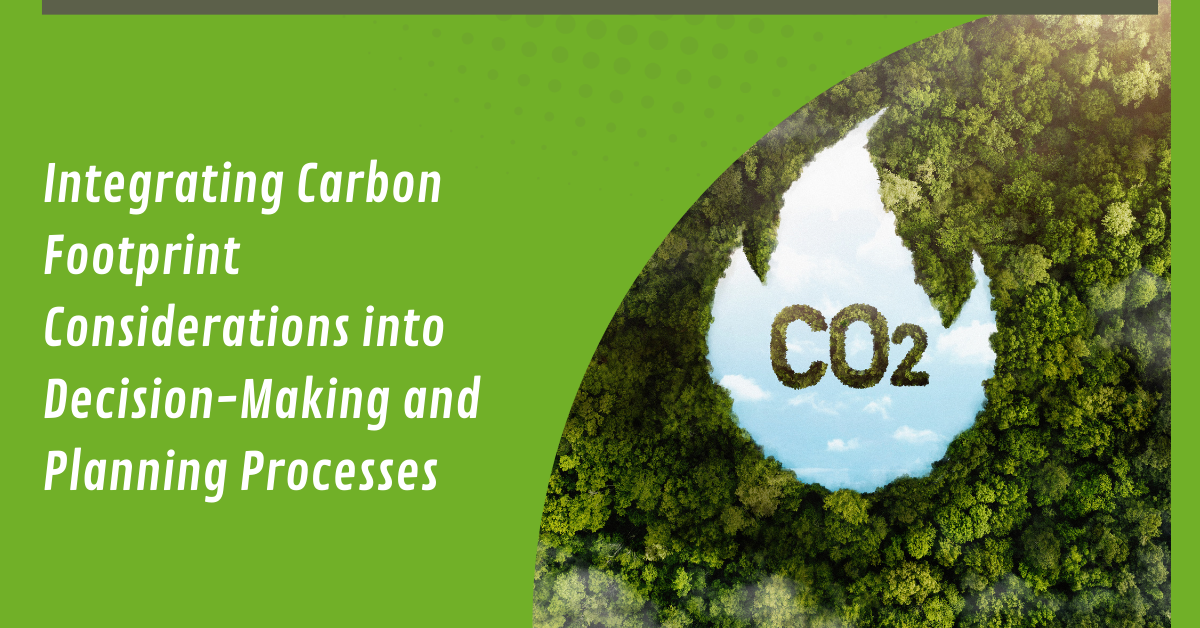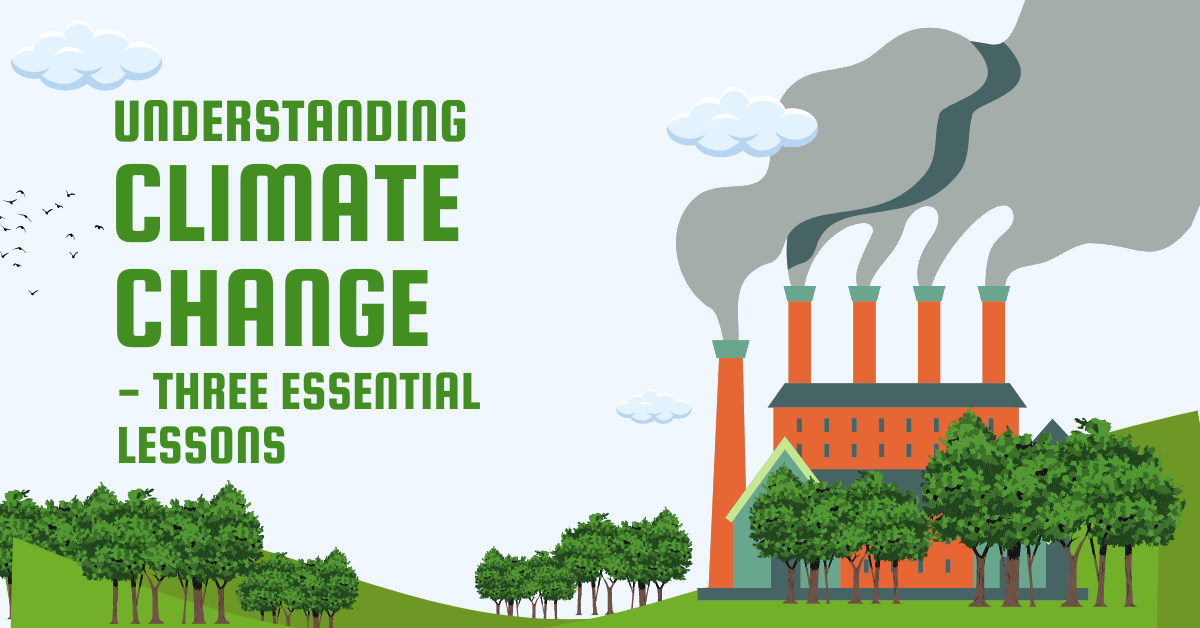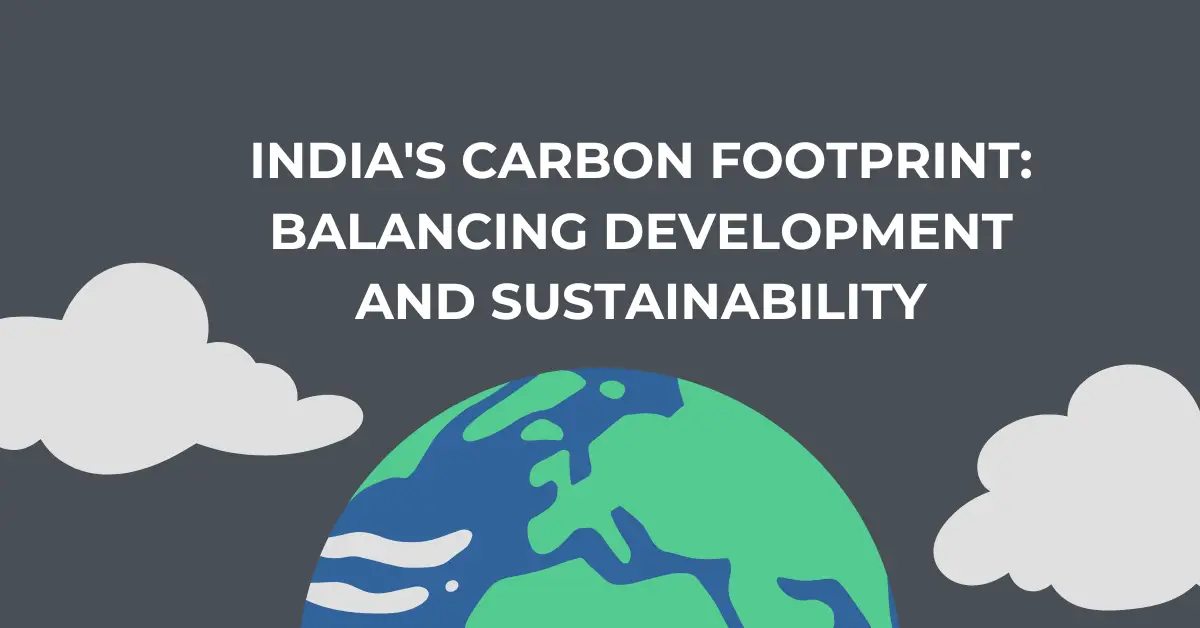In today’s era of heightened environmental awareness, integrating carbon footprint considerations into decision-making and planning processes is not just a responsibility but a strategic imperative for businesses aiming to enhance sustainability and reduce environmental impact. Whether you’re a small business or a multinational corporation, adopting a systematic approach to assess and mitigate carbon emissions can drive operational efficiency, improve brand reputation, and contribute to global climate goals. Here’s how organizations can effectively integrate carbon footprint considerations into their decision-making and planning:
1. Conduct a Carbon Footprint Assessment:
The first step towards integrating carbon footprint considerations is to conduct a comprehensive carbon footprint assessment. This involves calculating and analyzing greenhouse gas emissions (GHGs) across all scopes of your operations, including direct emissions (Scope 1), indirect emissions from purchased electricity (Scope 2), and other indirect emissions such as business travel and supply chain activities (Scope 3). A thorough assessment provides a baseline understanding of your environmental impact and identifies hotspots for emissions reduction.
2. Set Clear Carbon Reduction Goals:
Based on the findings of the carbon footprint assessment, establish clear and achievable carbon reduction goals aligned with global climate targets, regulatory requirements, and stakeholder expectations. These goals should be specific, measurable, time-bound, and integrated into your broader sustainability strategy and corporate objectives. Examples include achieving carbon neutrality by a certain year or reducing emissions intensity per unit of production.
3. Integrate Carbon Considerations into Strategic Planning:
Embed carbon footprint considerations into your strategic planning processes at all levels of the organization. Ensure that sustainability goals and carbon reduction targets are reflected in business plans, budgeting processes, and investment decisions. Evaluate the carbon implications of new projects, products, and initiatives during the planning phase to assess their alignment with sustainability objectives.
4. Adopt Energy Efficiency and Renewable Energy Solutions:
Prioritise energy efficiency measures to reduce energy consumption and associated carbon emissions in your facilities and operations. Implementing energy-saving technologies, optimizing manufacturing processes, and upgrading to energy-efficient equipment can yield significant carbon reductions. Additionally, consider investing in renewable energy sources such as solar, wind, and hydroelectric power to transition towards a low-carbon energy mix.
5. Optimise Supply Chain and Procurement Practices:
Address supply chain emissions by collaborating with suppliers to adopt sustainable practices, reduce emissions, and improve efficiency. Implement supplier sustainability assessments and incorporate environmental criteria into procurement decisions to promote responsible sourcing and reduce Scope 3 emissions. Consider local sourcing to minimize transportation-related emissions.
6. Implement Carbon Pricing and Internal Carbon Markets:
Introduce internal carbon pricing mechanisms to internalize the cost of carbon emissions and incentivize emissions reductions across the organization. Allocate carbon budgets to departments or business units, encouraging accountability and innovation in reducing emissions. Internal carbon markets can facilitate the trading of carbon credits or allowances to optimize emissions reduction efforts.
7. Educate and Engage Stakeholders:
Foster a culture of sustainability by educating and engaging employees, customers, suppliers, and other stakeholders on the importance of carbon footprint reduction. Raise awareness about corporate sustainability initiatives, share progress towards carbon reduction goals, and encourage stakeholders to contribute ideas and support for sustainable practices.
8. Monitor, Measure, and Report Progress:
Implement robust monitoring and reporting systems to track progress toward carbon reduction goals and evaluate the effectiveness of implemented measures. Utilise key performance indicators (KPIs) to measure emissions intensity, energy efficiency improvements, and carbon savings. Transparently communicate achievements, challenges, and future targets in sustainability reports to stakeholders.
9. Continuously Improve and Innovate:
Foster a culture of continuous improvement and innovation by regularly reviewing and updating carbon reduction strategies based on evolving technological advancements, regulatory changes, and stakeholder expectations. Embrace innovation in sustainable technologies, processes, and products to drive further reductions in carbon footprint and enhance competitiveness.
10. Collaborate and Advocate for Climate Action:
Engage in industry collaborations, partnerships, and advocacy efforts to collectively address climate change and advocate for supportive policies and initiatives. Participate in industry associations, working groups, and multi-stakeholder platforms to share best practices, leverage collective expertise, and amplify impact in driving systemic change.
Conclusion
Integrating carbon footprint considerations into decision-making and planning processes is essential for organizations committed to sustainable development, environmental stewardship, and long-term business resilience. By adopting a proactive approach to assess, mitigate, and monitor carbon emissions, businesses can mitigate climate risks, enhance operational efficiency, and contribute to global efforts to combat climate change. Embracing sustainability as a core business strategy not only aligns with regulatory requirements and stakeholder expectations but also positions organizations as leaders in driving positive environmental impact and fostering a sustainable future.
For more information on integrating carbon footprint considerations into your organization’s strategy, contact ClimeKare or visit our website today.






